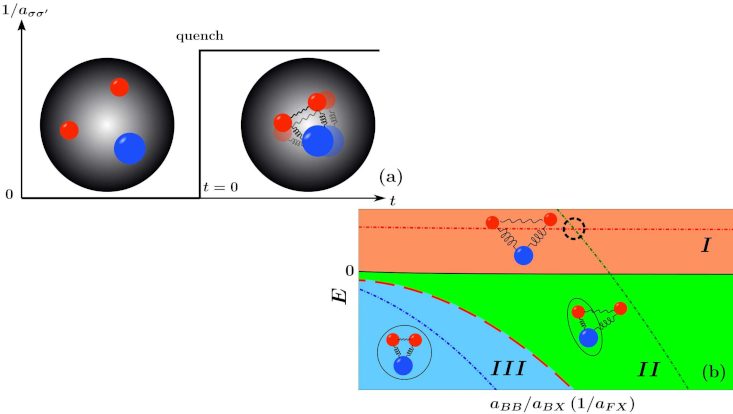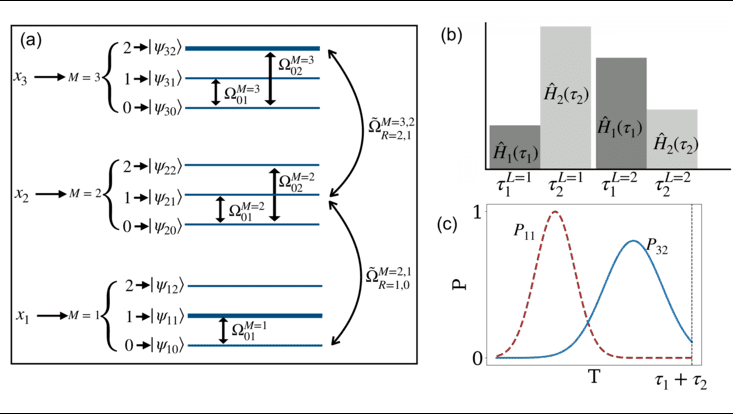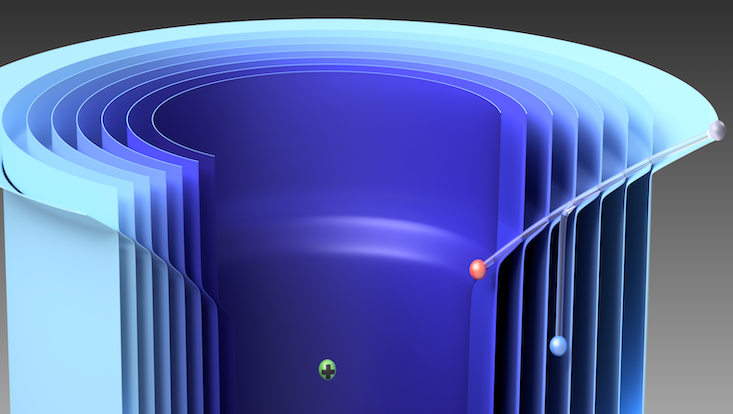Quantum Physics
Dynamical excitation processes and correlations of three-body two-dimensional mixtures
29 January 2023

Photo: AG Schmelcher
Few-body bound states are instrumental in understanding distinct phases of matter and universal phenomena like the Efimov effect. Quantum gases cooled down close to absolute zero offer an exquisite research platform to study bound state formation, given the tunability of interparticle interactions by means of magnetic fields. Several recent experimental breakthroughs allowed the dynamical association of trimers in strongly interacting Bose gases, which sparked the theoretical investigation of efficient protocols for forming these states. However, trimers are metastable and they decay very fast, rendering their detection an experimental and theoretical challenge. One possible way out is to confine the gases along one dimension using strong magnetic fields, rendering them effectively two-dimernsional. It is predicted that longer lived trimer states can thus form.
In this work, we investigate the controlled dynamics of three particles confined in a two dimensional harmonic trap, and find an efficient way in dynamically associating two- and three-body bound states. Two particles are identical, either bosons or fermions and the third one is distinguishable. This produces a rich energy spectrum with varying number of trimer states, depending on the mass ratio between the two species as well as the interspecies interactions. Initializing the atoms in a non-interacting state with a spatial extent larger or smaller than the length scale provided by the harmonic trap, leads to distinct dynamics. In the case where the extent is smaller, trimers and atom-dimers dynamically emerge for a wide range of mass ratios and interaction strengths. In the opposite case, trap states describing the three interacting particles are predominantly populated. These distinct dynamical features are imprinted on few-body correlation measures, which are within current experimental reach. Finally, we discuss possible ways to achieve a variable spatial extent for the atoms initially, such as for instance an abrupt change in the trapping frequency.
Publication
G. Bougas, S. I. Mistakidis, P. Giannakeas, and P. Schmelcher
“Dynamical excitation processes and correlations of three-body two-dimensional mixtures”


